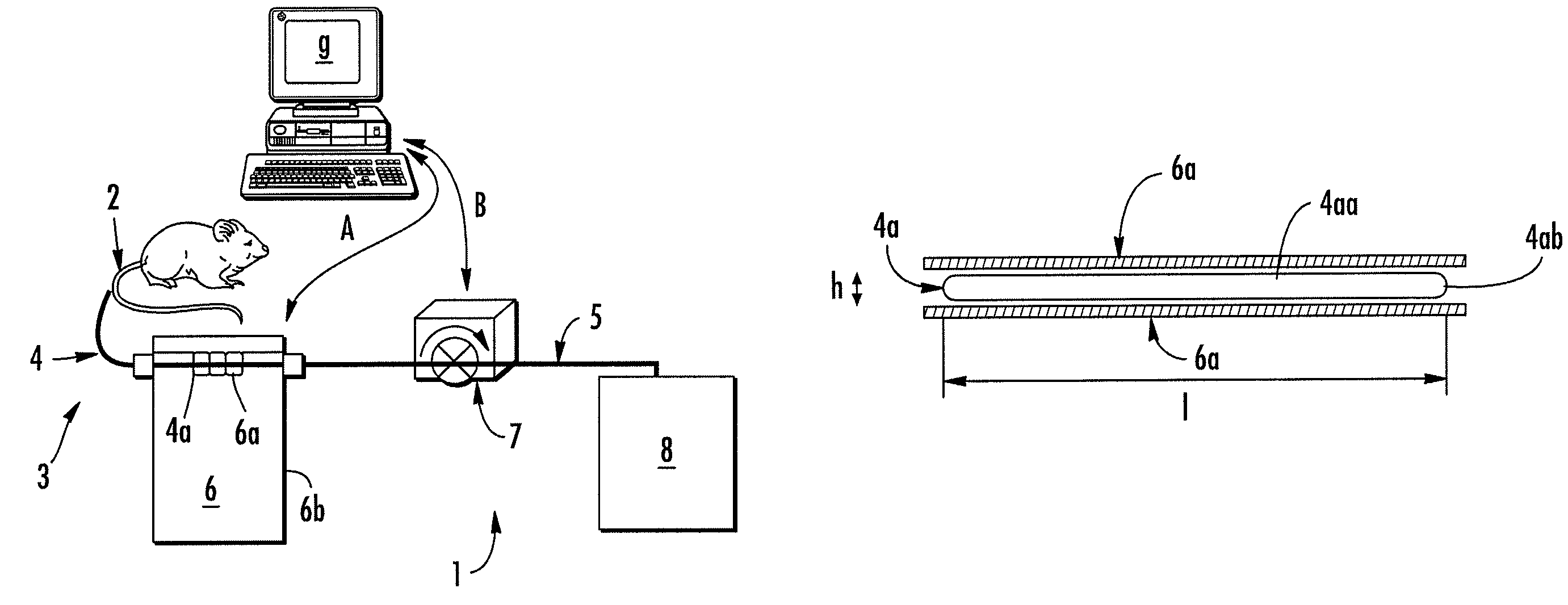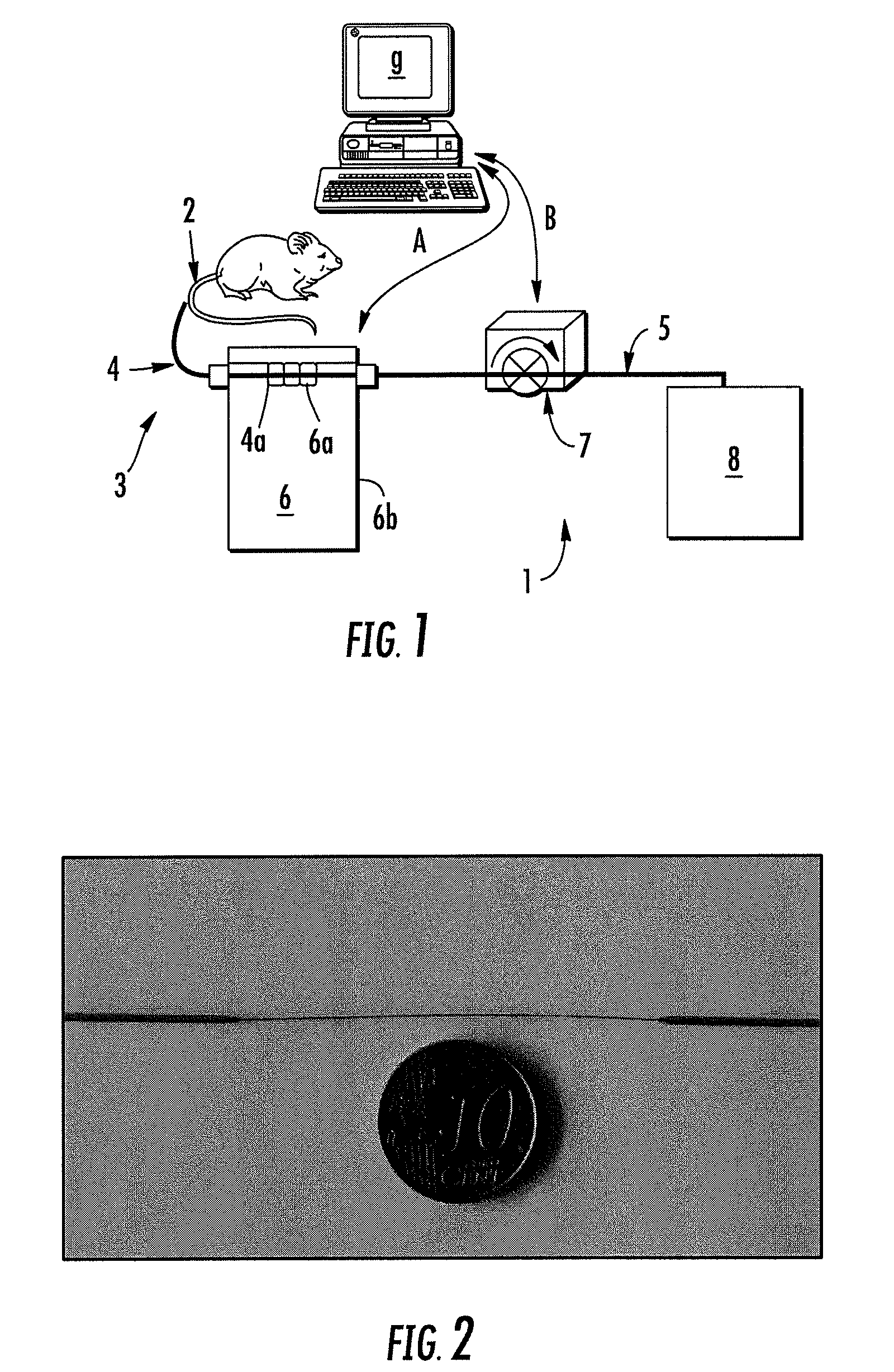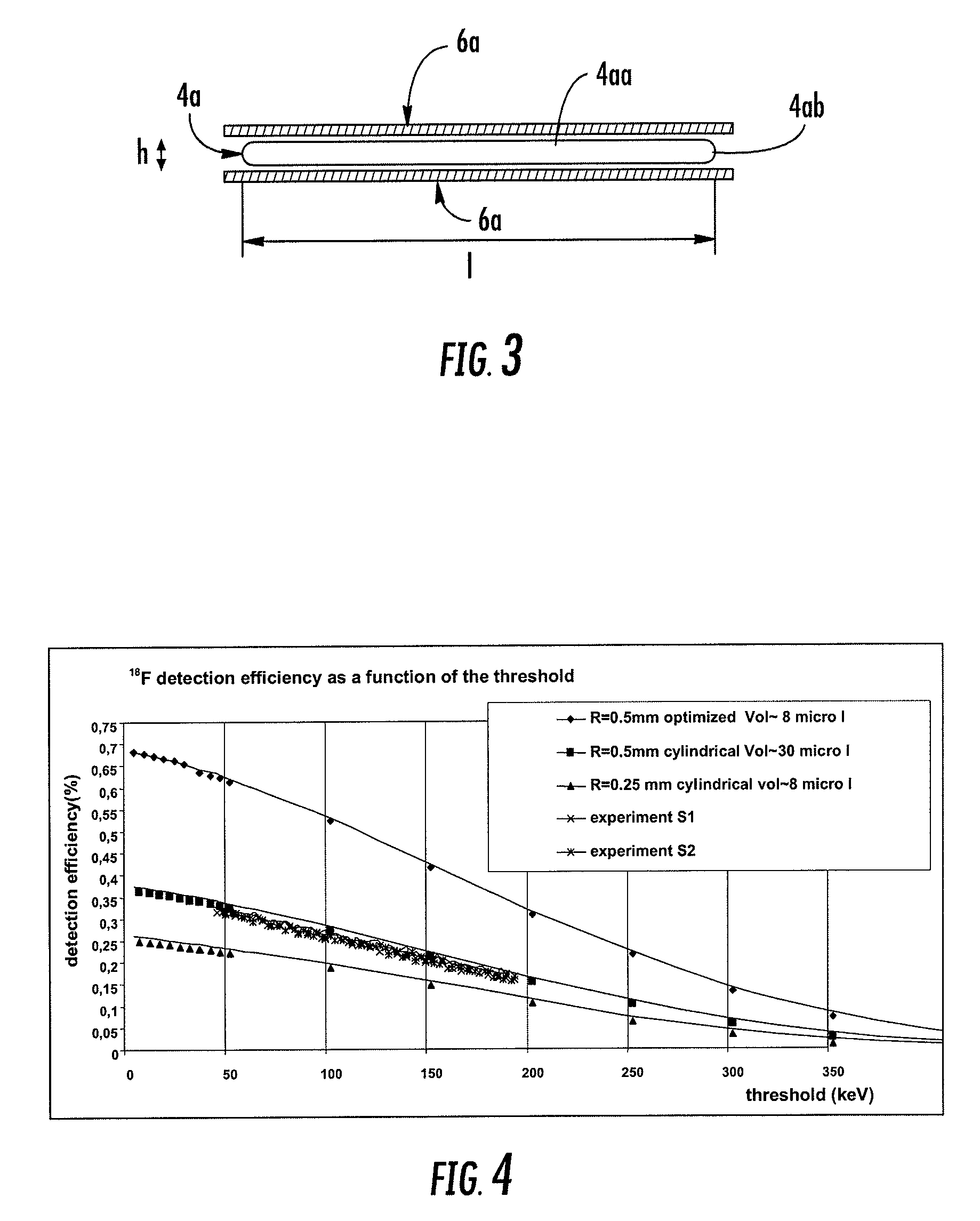Device and method for counting elementary particles emitted by a fluid in a conduit
- Summary
- Abstract
- Description
- Claims
- Application Information
AI Technical Summary
Benefits of technology
Problems solved by technology
Method used
Image
Examples
Embodiment Construction
[0037]FIG. 1 illustrates by way of example an automated installation 1 for carrying out, in succession and continuously, the taking of blood microsamples from a small mammal 2, for example of the rat or mouse type, for temporarily storing said microsamples and for carrying out radioactive measurements thereon, by means of a sampling system 3 that includes a succession of lines 4 and 5 of the flexible capillary or microtube type. This sampling system 3 essentially comprises:[0038]a catheter which is equipped with a connection device (not illustrated) and is intended for sucking up, in bursts, the same amount of blood to be taken, via a peristaltic pump 7;[0039]a counting device 6 for counting the particles present in the microsamples taken, which in this example is a counter 6 that counts positrons or electrons resulting from the beta-radioactivity for total blood microsamples and which is placed as close as possible to the sampling point, being virtually in contact with a counting p...
PUM
 Login to View More
Login to View More Abstract
Description
Claims
Application Information
 Login to View More
Login to View More - R&D
- Intellectual Property
- Life Sciences
- Materials
- Tech Scout
- Unparalleled Data Quality
- Higher Quality Content
- 60% Fewer Hallucinations
Browse by: Latest US Patents, China's latest patents, Technical Efficacy Thesaurus, Application Domain, Technology Topic, Popular Technical Reports.
© 2025 PatSnap. All rights reserved.Legal|Privacy policy|Modern Slavery Act Transparency Statement|Sitemap|About US| Contact US: help@patsnap.com



